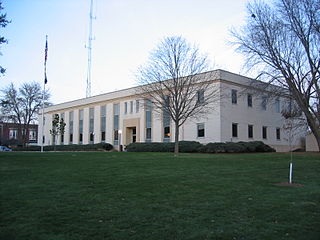
Cedar County is a county located in the U.S. state of Iowa. As of the 2020 census, the population was 18,505. Its county seat is Tipton. The county is named for the Cedar River, which runs through the county.

Atkins is a city in Benton County, Iowa, United States. The population was 2,056 at the 2020 census. It is part of the Cedar Rapids Metropolitan Statistical Area.

Mount Auburn is a city in Benton County, Iowa, United States. The population was 162 at the time of the 2020 census. It is part of the Cedar Rapids Metropolitan Statistical Area.
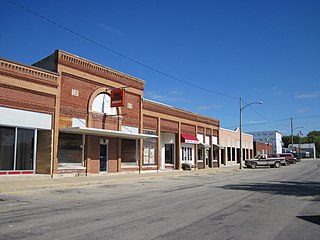
Urbana is a city in Benton County, Iowa, United States. The population was 1,554 at the time of the 2020 census. It is part of the Cedar Rapids Metropolitan Statistical Area.

Clarence is a city in Cedar County, Iowa, United States. The population was 1,039 at the time of the 2020 census.

Durant is a city in Cedar, Muscatine, and Scott counties in the U.S. state of Iowa. The population was 1,871 at the time of the 2020 census.

Lowden is a city in Cedar County, Iowa, United States. The population was 807 at the time of the 2020 census.

Mechanicsville is a city in Cedar County, Iowa, United States. The population was 1,020 at the time of the 2020 census.

Tipton (/ˈtɪptən/) is a city in Cedar County, Iowa, United States. The population was 3,149 at the time of the 2020 census. It is the county seat of Cedar County.
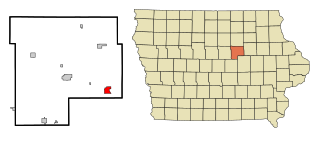
Reinbeck is a city in Grundy County, Iowa, United States. The population was 1,662 at the 2020 census—a five percent decrease from the population of 1,751 in 2000. It is part of the Waterloo–Cedar Falls Metropolitan Statistical Area and is in the Cedar Valley.

Keswick is a city in Keokuk County, Iowa, United States. The population was 242 at the time of the 2020 census.

Thornburg is a village in Keokuk County, Iowa, United States. The population was 45 at the time of the 2020 census. Its sole enterprise is the Tri-County Community School, a public school serving grades K-12.

Palo is a city in Linn County, Iowa, United States. The population was 1,407 at the time of the 2020 census. It is part of the Cedar Rapids Metropolitan Statistical Area.

Prairieburg is a city in Linn County, Iowa, United States. The population was 160 at the time of the 2020 census. It is part of the Cedar Rapids Metropolitan Statistical Area.

Robins is a city in Linn County, Iowa, United States. The population was 3,353 at the time of the 2020 census. It is a suburb of Cedar Rapids and part of the Cedar Rapids Metropolitan Statistical Area.
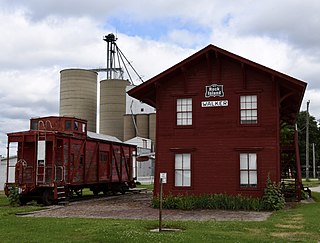
Walker is a city in Linn County, Iowa. The population was 688 at the 2020 census. It is part of the Cedar Rapids, Iowa metropolitan area.
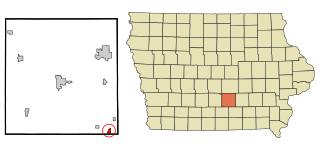
Hamilton is a city in Marion County, Iowa, United States. The population was 119 at the time of the 2020 census.

Hollow Creek is a home rule-class city in Jefferson County, Kentucky, United States. The population was 783 at the 2010 census.

Conesville is a village in Coshocton County, Ohio, United States, along the Muskingum River. The population was 328 at the 2020 census.

Northwest Stanwood is a census-designated place (CDP) in Snohomish County, Washington, United States. The population was 149 at the 2010 census. The CDP was known as North Stanwood prior to the 2010 census, and it included area that is now part of the city of Stanwood.





















